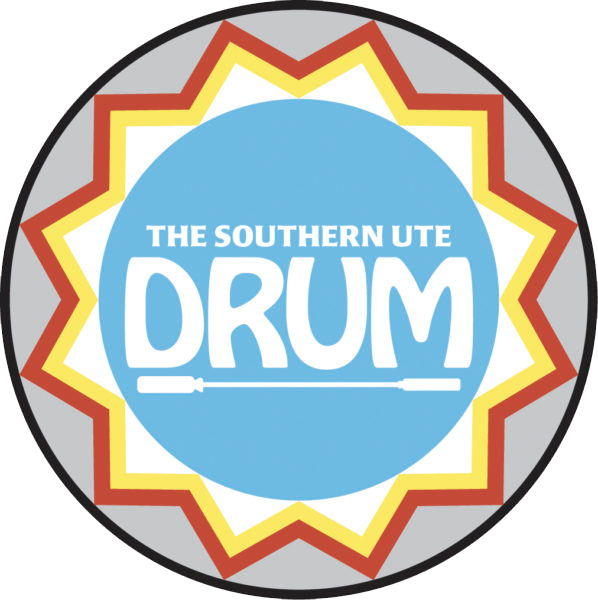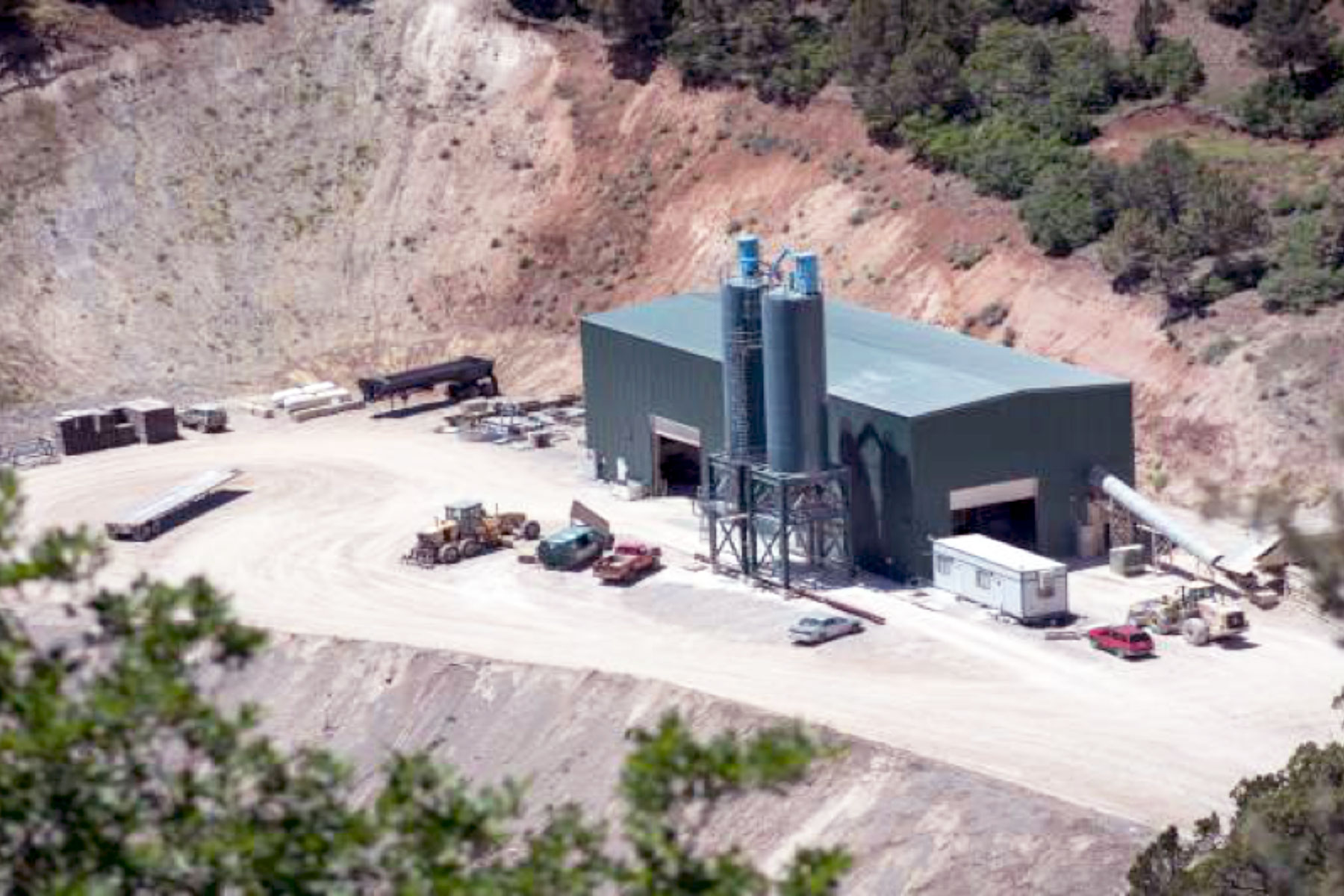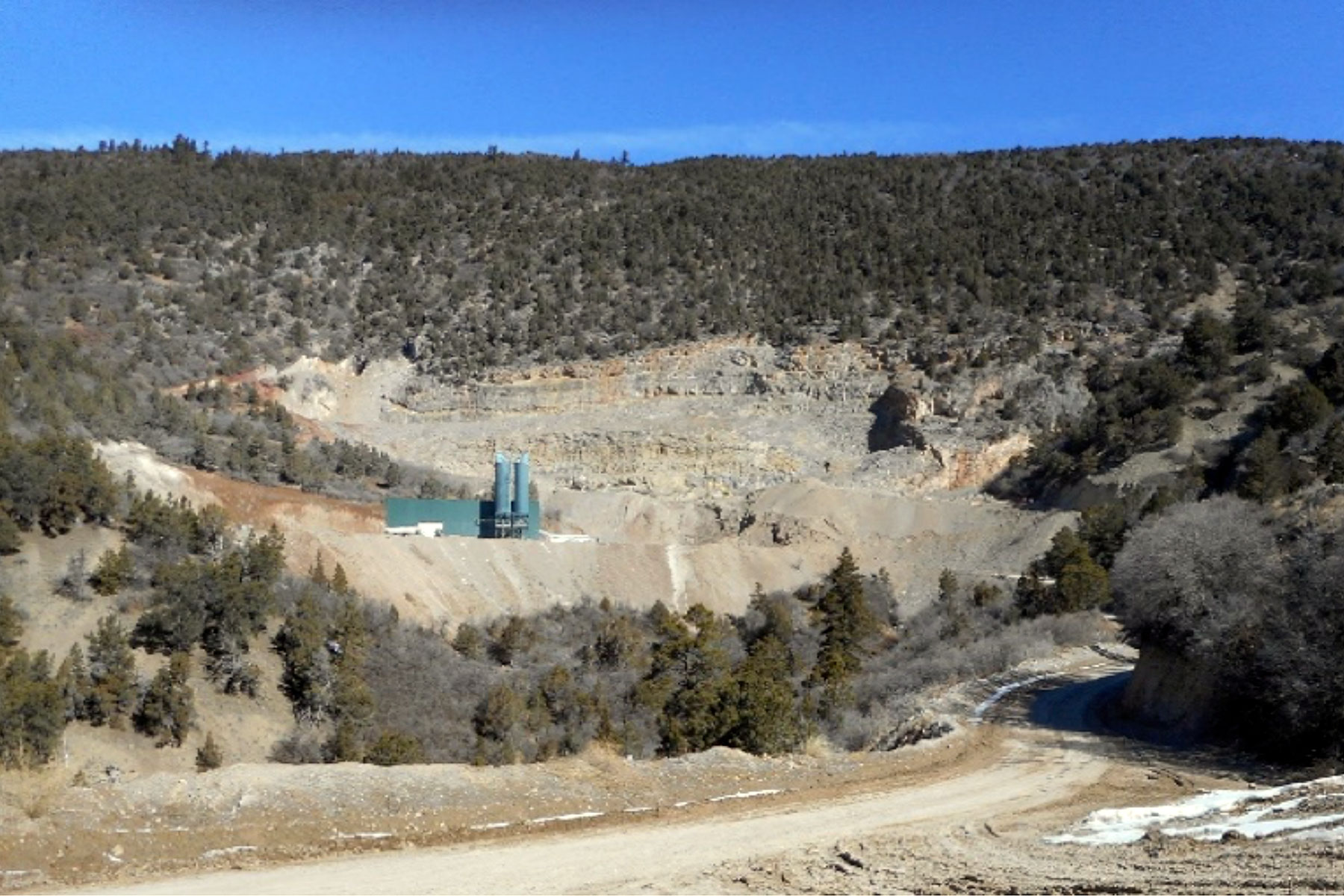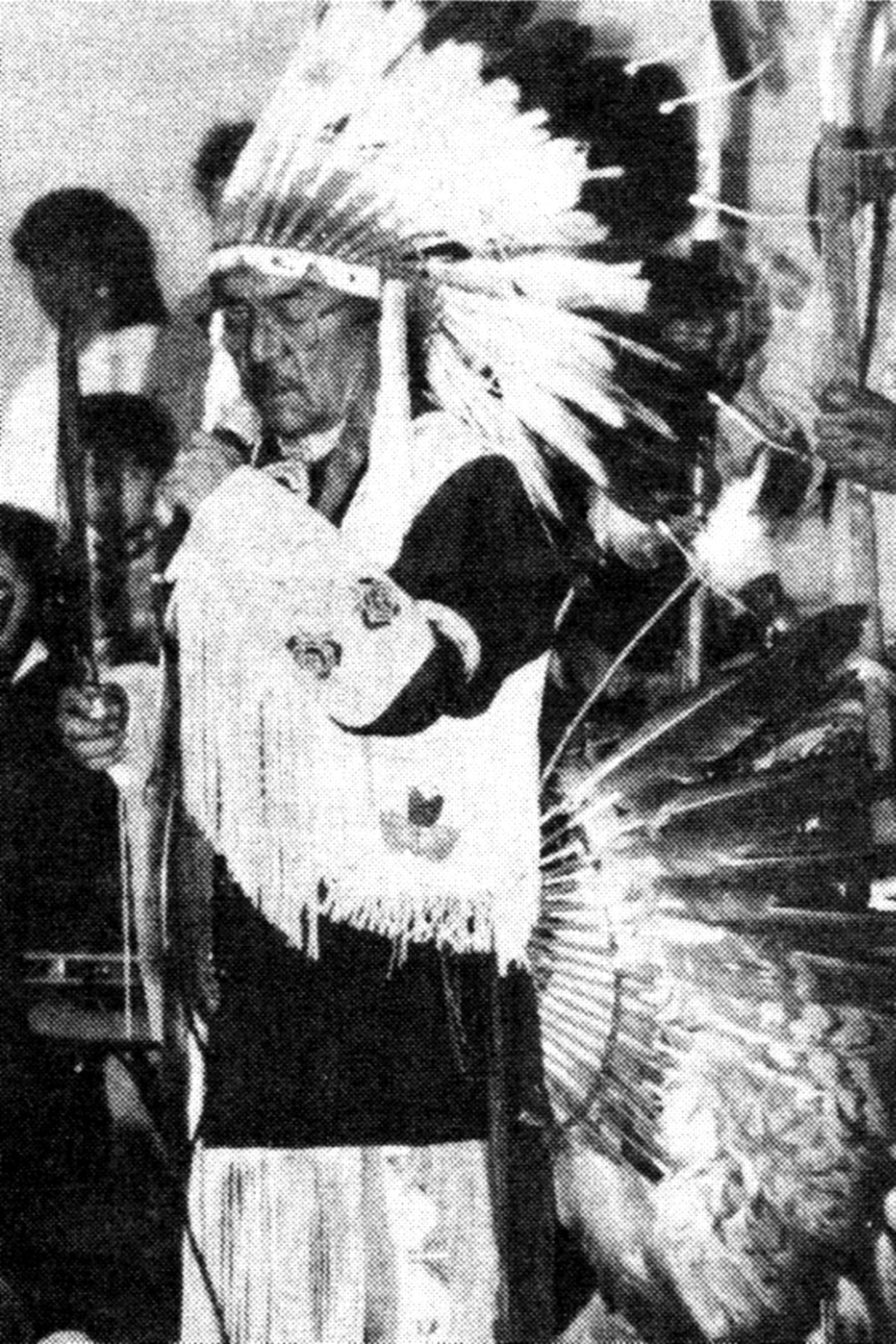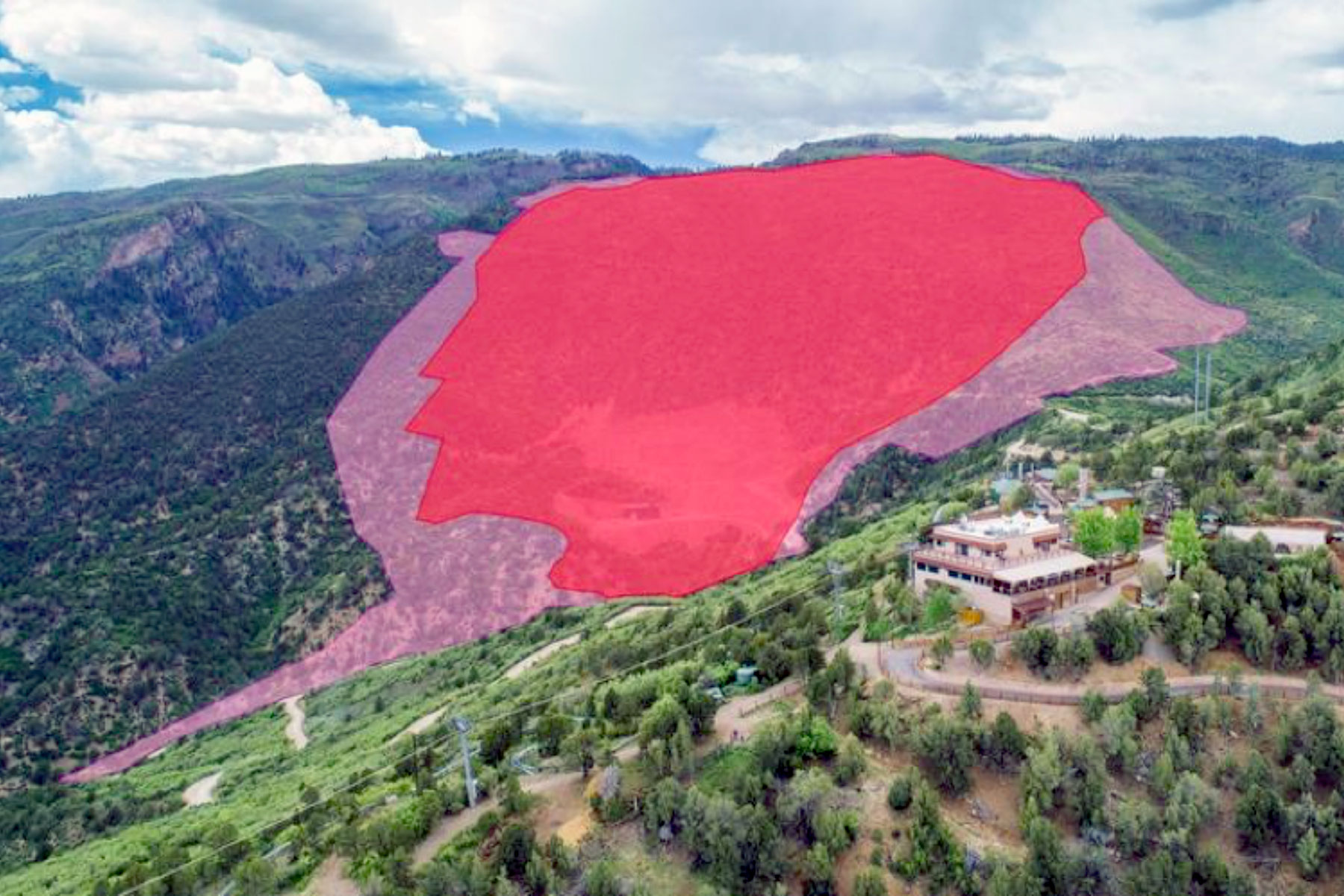Safeguarding sites from proposed mine expansion
Since the moment of creation, our ancestors were told to immediately make weapons of war. After being placed on their respective locations across the mountainous terrain of Nuuchiu tuvupu (phonetically pronounced New-chew too-voo-poo) or The Peoples’ Land, Creator warned that they and their descendants would face untold challenges and constantly be attacked by forces determined to destroy their loved ones and lifeways.
While times have shifted from battlefields to courtrooms, the fight to preserve our heritage continues on multiple fronts. One aspect of Ute stewardship is the protection of physical places and geological features of cultural significance. To fulfill this duty, Ute Cultural Preservation representatives, from the three Ute sister tribes, utilize laws and regulations, such as the Native American Graves Protection and Repatriation Act (NAGPRA), Section 106 of the National Historic Preservation Act (NHPA), and the National Environmental Policy Act (NEPA).
For over four decades, Ute Cultural Preservation Representatives have presented a united front to protect places of cultural importance across Nuuchiu tuvupu. While it is common to receive over 3,000 proposed project notifications annually, the duration of consultation varies –some projects last weeks, while others last years. The tribal entities tasked with these responsibilities are the Southern Ute Indian Tribe’s NAGPRA Office (SUIT NAGPRA Office), Ute Mountain Ute Indian Tribe’s Tribal Historic Preservation Office, and Ute Indian Tribe’s Cultural Rights and Protection Department.
In 2018, the Ute tribes were informed of a proposed project submitted to Bureau of Land Management’s Colorado River Valley Field Office (BLM CRVFO), by Rocky Mountain Resources Aggregates, Inc. (RMR). In January 2020, RMR changed its name to Rocky Mountain Industrials Inc. (RMI). Therefore, RMI will be used through the entirety of the article.
RMI’s proposal is to expand upon a preexisting mining claim that it currently operates – Mid-Continent Limestone Quarry. The Mid-Continent Limestone Quarry is located north of Glenwood Springs, Colo., on a slope behind Iron Mountain, which is in close proximity to sacred Ute heritage sites, such as Yampa Hot Springs and Vapor Caves. RMI’s proposed project, as outlined in its 2018 application, has the potential to adversely affect and inflict irreversible damage to these culturally significant thermal features.
Cultural importance of Glenwood Springs
The town of Glenwood Springs is located within the Roaring Fork Valley—an area known for its extensive thermal features and abundance of natural resources. Based on oral history among the Kapuuta and Mouache Bands, Glenwood Springs is located within a portion of the traditional Nuuchiu tuvupu of the Subuagan and Parianuche Bands.
The History of the Northern Utes, written by Fred Conetah, details how the Yampa Band or Whiteriver Band also visited and used resources in the area, during their seasonal rotation. Located at a confluence, the Yampa Band likely accessed the valley by traveling south along the Roaring Fork River to the point it merges with the Colorado River. Due to the location of Glenwood Springs, RMI’s project falls under the ancestral jurisdiction of the Ute Indian Tribe.
Although people may simply view the Yampa Hot Springs and Vapor Caves as tourist destinations, these places are physically and spiritually connected to the very fabric of our being as Ute people. The significance of this area is maintained today, evidenced by the year around visitation of tribal members from the Ute tribes.
As Terry Knight, tribal elder and Tribal Historic Preservation Officer for the Ute Mountain Ute Indian Tribe, explains, “… our Ancestors would visit these places, when they were in the area, because the minerals and warmth would heal their body from the inside out, by providing rejuvenation and relaxation, assisted through prayer, during times of immense stress.”
Many Ancestral sites connected to northern Ute Bands are located in and around the Roaring Fork Valley. While many are known by Ute people descendant from the Subuagan, Parianuche, and Yampa, which were passed down through oral history, others are recorded, documented, and managed by federal land management agencies, including the United State Forest Service and BLM.
As Cassandra Atencio, SUIT NAGPRA Coordinator, female-counterpart, expresses, “… it is of the utmost importance to keep these locations private, to protect them [culturally significant sites and sacred places] from looting and destruction, because there are very few places within Colorado that Ute can still go to use and visit – places that carry deep cultural significance and spirituality.”
Glenwood Springs is also noteworthy in more recent Ute history. During the week of April 18, 1993, the first United Ute Summit was held to discuss common issues, as well as celebrate their reunion with a powwow. This was the first time the three Ute tribes met in this area to discuss tribal concerns in 114-years, following the illegal occupation of prospectors from Leadville in 1878 and the removal of Northern Ute Bands following the Meeker Incident and the subsequent Treaty of 1879.
The second and last United Ute Summit and powwow in Glenwood Springs was held in 1994. While the traditional practice of holding ‘Inter-tribal council meetings’ began long ago, at places like Council Tree in Delta, Colo., the United Ute Summit resulted in quarterly assemblies that are held today, which are now known as Tri-Ute Council Meetings.
The United Ute Summit and powwow led to conversations about the ancestral connection to Glenwood Springs and the Roaring Fork Valley. As a result, friendships were established and solidified through the sharing of traditional knowledge with locals. One relationship forged during the 1993 Summit was between the Ute tribes and the owners of Yampa Hot Springs and Vapor Caves. This resulted in an acknowledgement of their Ancestors’ presence and traditional use and sacred significance of these places in the Roaring Fork Valley on their website and brochures.
A lasting relationship: City of Glenwood Springs and the Utes
RMI’s proposal brought fervent local criticism from individuals and organizations concerned about environmental and visual impacts. Due to internal BLM review processes, the three Ute tribes were not officially invited to consult until September 2018. However, as a result of long-standing relationships between residents and tribal members, the Mayor of Glenwood Springs, Michael Gamba, sent a letter to Southern Ute Chairman Christine Sage to inform her of RMI’s request on August 27, 2018.
After discussion with SUIT NAGPRA representatives, Chairman Sage approved their urgent request to invite Mayor Gamba to address tribal leaders at the upcoming Tri-Ute meeting in Ignacio, Colo. Although Mayor Gamba could not attend, due to a scheduling conflict, he sent two knowledgeable representatives – Bill Kight, Executive Director of Glenwood Springs Historical Society, and Debra Figueroa, Glenwood Springs City Manager – to address Tribal leaders on August 31, 2018 about RMI’s current operation and expansion proposal.
The involvement of Kight represents one of many long-lasting, multi-generational friendships with the Ute tribes. Over 30-years ago, Kight, employed by the United States Forest Service, White River National Forest Supervisors Office, and a couple others, passionately petitioned to invite and involve Ute tribal representatives to consult on the management of their Ancestral homelands.
Today, this effort is remembered by Southern Ute Cultural Preservation representatives as the first Federal Land Management Agency in the State to not only invite the oldest and longest continuous inhabitants in Colorado, but involve the three Ute tribes in the protection and management of their Ancestral homelands. Kight too was involved in helping coordinate the transportation of Ute Cultural Preservation representatives and tribally elected officials to culturally significant sites, during the 1993 and 1994 United Ute Summit.
RMI: Political Ties, New Name, Same Intent for Mid-Continent Quarry
RMI is a limited liability company founded by American businessman Chad T. Brownstein in 2006. With offices in Los Angeles, Calif. and Denver, Colo., RMI concentrates on industrial complex acquisitions, such as oil and gas operations, agribusiness, and industrial materials. RMI also pursues business opportunities by allocating assets towards discovering, financing, and operating natural resources.
Owned by the son of Norman Brownstein – a politically connected attorney and partner of the second-largest lobbying firm in the nation, Brownstein Hyatt Farber Schreck, it is of no surprise that staunch opposition arose among Glenwood Springs residents, due to concerns about due process, regulatory oversight, and accountability. Norman Brownstein is a major donor to political campaigns and lobbying in Washington, D.C.
In Colorado Sun’s April 18, 2019 article – The politically connected owner of Glenwood Springs quarry wants a massive expansion; residents are preparing for a fight. Jason Blevins highlights the concerns of community members.
According to Blevins research, Glenwood Springs “… residents are worried about a fair outcome with the Mid-Continent Quarry.” Blevins expands upon their dismay by citing the political influence of Chad Brownstein’s father, who is also connected to the Secretary of the Interior David Bernhardt, “… a Rifle [Colorado] native who served as a lobbyist for Brownstein Hyatt Farber Schreck’s oil and mining clients.” Hence, Brownstein’s ties to bureaucrats and politics should raise alarm, especially with respect to the attacks leveled against environmental and heritage preservation laws by the current federal administration.
RMI acquired the Mid-Continent Limestone Quarry from CalEx Minerals in 2016. Since the very beginning, the company’s timeline indicates its sights were always set on expansion. RMI submitted their initial Plan of Operations Modification (POM) in Nov. 2018, which listed their proposed adjustments to their preexisting lease provisions. The POM aligned with their unadulterated fiduciary mission – acquire, expand, extract and transport, in order to profit themselves and appease their shareholders, with little emphasis on compliance.
BLM CRVFO determined RMI’s November 2018 POM was incomplete due to over 70 deficiencies in their proposal. This delay stymied BLM’s ability to begin the environmental review process. However, while RMI re-worked their proposal, they continued to communicate with the Ute Cultural Preservation representatives. Before the end of 2018, RMI’s third POM was deemed complete by BLM CRVFO.
RMI intends to accomplish its ambitious goal by mining round-the-clock for a minimum of 20-years. It requests to expand its permit boundary from 15.7 acres to 321-acres, with a total permitted area of 447-acres. RMI’s POM forecasts an increase from 20 dump truck loads to potentially 250-300 trips per day. If approved, blasting is scheduled to occur between 9 a.m. and 4 p.m., with processing and transportation of minerals from 6 a.m. to 6 p.m.
Tribal Consultation with BLM CRVFO
In Oct. 2018, Ute Cultural Preservation representatives initiated consultation per Section 106 of the NHPA. Well informed of the project and its potential impacts to non-renewable culturally significant sites, they maintain their vehement opposition to the proposed project and requested periodic updates. The Ute tribes used these updates to coordinate and develop their defense strategy.
On Aug. 12, 2019, BLM CRVFO published an updated fact sheet, repeating its intent to execute the Determination of Common Variety (DCV) or mineral exam, followed by baseline studies: hydrological study, cave/karst study, ethnographic study, and standard biological and cultural surveys.
The future of RMI’s proposal hinges on the results of the DCV. As Larry Sandoval, Field Manager for BLM CRVFO, explains “the DCV is a mineral examination conducted by BLM mineral examiners to help identify whether the mining claims are locatable and subject to the Mining Law (of 1872).” Sandoval cautions that several outcomes are possible due to the results of the DCV, which will indicate whether “BLM will stay the course with completing the baseline studies—including the hydrologic ground water study and ethnography.” The DCV results are projected to be issued in either late August or sometime in September.
How can the Utes and allies express their opposition?
Depending on the DCV results, there are at least two actions that the Ute people and their allies can do if they oppose RMI’s strip mine proposal. First, if the DCV verifies that the minerals underlying RMI’s mining claims are locatable and of an uncommon variety, then RMI’s proposal is subject to the Mining Law of 1872, and BLM is required to continue evaluating their expansion request. Those who oppose the strip mine have the ability to make calls and submit letters to elected officials on a city, county, state, and federal level to request U.S. Congress to change the 1872 Mining Law.
Second, if the minerals are locatable and determined to be common variety, and thereby not subject to the Mining Law of 1872, then the BLM would work with RMI to relinquish all or parts of the claim. In this scenario, the BLM would essentially deny RMI’s proposed expansion. However, RMI could revise their plans and come back to the BLM with a proposal that aligns with any locatable uncommon claims, or a proposal to mine non-locatable limestone under other mineral material authorities.
BLM would have discretion when considering a non-locatable proposal. Therefore, they would determine the need and scope of baseline studies that need to be reevaluated with the consulting parties and review the input from public scoping following the DCV. Hence, allowing the BLM to consider the evaluation of environmental impacts, via NEPA, with respect to the total human environment.
Per NEPA, the “human environment shall be interpreted comprehensively to include the natural and physical environment and the relationship of people with that environment (see 40 CFR § 1508.14).”
This probable outcome allows for the ethnography to proceed with the guidance and involvement of the Utes tribes. More specifically, it enables Ute Cultural Preservation representatives to reach out to their tribal communities and work with tribal elders who possess knowledge about the area. Hence, determining what information could be shared with BLM CRVFO, prior to their decision to approve or deny RMI’s proposal.
The information recorded from interviews and site-visits will be viewed in conjunction with the results from all other baseline studies. Following the completion of the environmental analysis, all interested parties (i.e. any American who wants to comment on the project) and tribes are able to submit comments and voice their support or disapproval within a 45-day commenting period from the publication of the environmental report – be it an Environmental Assessment or Environmental Impact Statement.
Regardless of the DCV results, the Ute tribes will do everything within their legal power to protect these non-renewable and culturally significant Ute heritage sites from destruction per NEPA, NHPA, and Executive Order 13007. For additional information about the project and to obtain the addresses of county, state, and federal representatives to submit a letter of opposition about RMI’s proposal, please contact NAPGRA Coordinators Cassandra Atencio at catencio@southernute-nsn.gov and 970-563-2989, or Garrett Briggs at gbriggs@southernute-nsn.gov and 970-563-2257.
This article written by Garrett Briggs | NAGPRA Coordinator
